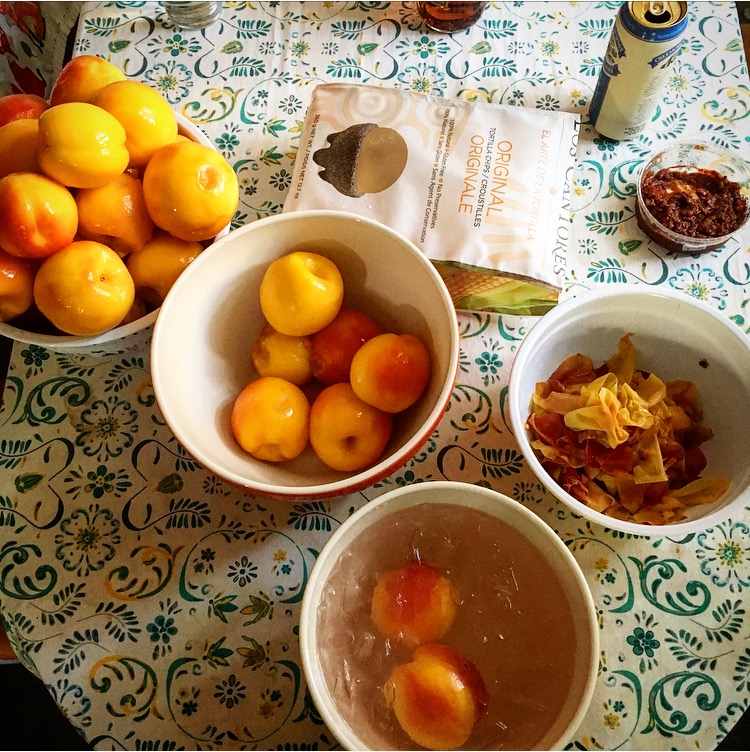
Canning Peaches – Hot Pack Method
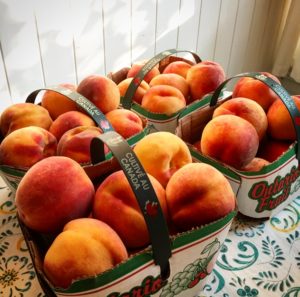 Canned peaches can be eaten just as they are, or used in recipes that call for fresh ripe peaches. Try to get high-quality fruit at peak ripeness for best results.
Canned peaches can be eaten just as they are, or used in recipes that call for fresh ripe peaches. Try to get high-quality fruit at peak ripeness for best results.
People always make canning seem super-difficult and complicated and time-consuming, but in fact it’s mostly washing things and cutting up fruit or vegetables. Don’t be afraid – just make sure your work area is clean, wash everything well, and follow the instructions below!
I’ve added some notes at the bottom from my first experience canning peaches; they’re as much for myself as anyone else, but you may find them helpful!
Canning Peaches – Hot Pack Method
Yield: 5-6 Litres
Prep time: It really depends on how fast you work, but maybe an hour to clean, peel, and cut up the peaches?
Resting time: 24 hours (approx)
When to eat: any time after canning, safe to eat for 1-2 years (it really depends on who you ask, but if they’re sealed properly and kept away from light/heat they could keep longer)
Ingredients
16 lbs fresh, ripe peaches (about four of those 3L peach baskets)
5-6 One-Litre canning jars
Sugar (see below)
Water (see below)
Peaches are a high-acidity fruit, so technically speaking you can can them in plain water or fruit juice (please double-check this before trying!), but adding a sugar syrup improves colour and taste. I used the water that I had blanched my peaches in, as I had cleaned the fruit thoroughly beforehand and didn’t want to waste the flavour/colour that remained in it once the peaches were removed.
Syrup Sugar Water Yield
Light 2 cups 6 cups 7 cups
Medium 3 cups 6 cups 6 1/2 cups
Heavy 4 cups 6 cups 7 cups
Equipment
Most of the items listed below are standard canning equipment that you will be able to use over and over.
Large Pot
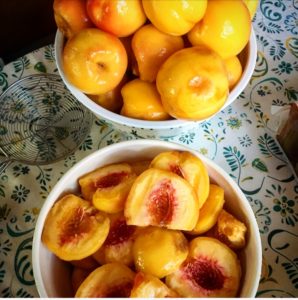 Bowl
Bowl
Ice
Sharp Knife
6 Quart-sized canning jars with brand-new lids
Canning funnel
Slotted spoon
Ladle
Rubber spatula or similar
Clean cloth
Jar-lifting tongs
Canning pot
Instructions
- Wash jars and lids in hot, soapy water. Rinse well and air dry.
- Wash peaches thoroughly in water.
- Remove skins from peaches – blanch peaches in boiling water, then immerse in ice water for a few minutes. Skins should slip off (works best with ripe fruit). **note below
- Pit peaches by cutting along the ‘seam’ of the peach with a sharp knife – be sure to slice right through to the pit – and prying the slices apart lightly with the knife. **note below
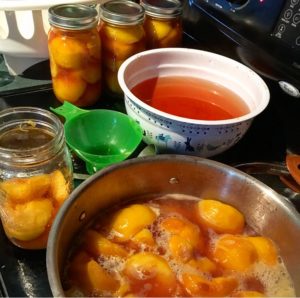 Slice peaches as desired, removing any bruised, brown, or mushy areas.
Slice peaches as desired, removing any bruised, brown, or mushy areas.- In a large pot, heat water, slowly adding sugar and mixing to dissolve, creating a sugar syrup. **Note below
- Bring sugar syrup to a boil, then reduce to simmer.
- Add sliced peaches to sugar mixture and simmer for 5 minutes. You can work in batches if the volume of peaches is too large for the pot.
- Using a slotted spoon, pack the hot peaches into the clean jars.
- Using a ladle, fill remaining space in jars with hot sugar syrup, leaving a ½ inch headspace at the top. **Note below
- Using a rubber spatula or similar, remove air bubbles by running it around the edges of the jar, occasionally pressing inward against the fruit.
- Wipe the rims of the jar with a clean cloth, and add lid and screw band. Finger-tighten screw band; do not over-tighten.
- Place in boiling water bath, ensuring at least 1 inch of water above the tops of the lids. Bring water back to a boil. Process the jars of fruit in a boiling water bath for 25 minutes (if you’re more than 1000 feet above sea level, water bath times are longer! Look them up online before starting).
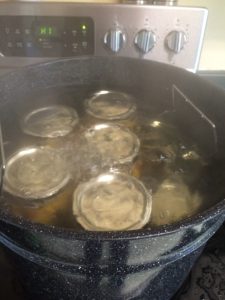 Remove jars from water bath carefully, without bumping or jostling. Allow to cool undisturbed overnight.
Remove jars from water bath carefully, without bumping or jostling. Allow to cool undisturbed overnight.- Test the lids of the jars to see if they’ve sealed properly – a proper seal means the lids are bowed down in a bit in the centre and don’t move when pressed. If the lids pop up and down when you press them, they haven’t sealed properly and can’t be stored at room temperature. It’s possible to reprocess the jars with a brand-new lid to see if they will seal properly, but otherwise they should be stored in the fridge and eaten early.
- Store jars in a cool, dark place until you’re ready to use them. Check occasionally to ensure that the screw bands aren’t rusting – this can cause the seal to break. Fruit in sealed jars may change colour over time, turning blue, pink, or red, or it may darken if it is not covered by the sugar syrup. This is a normal chemical reaction that does not indicate spoilage.
**Re: Step 3 – I left the peaches in the boiling water too long (many minutes), and it cooked them a bit, which made them soft and hard to cut. You really should just immerse them quickly (seconds) and then douse them in the ice water. Also, it’s worthwhile to buy a bag or two of ice – I had to re-ice the water several times.
** Re: Step 4 – This can be a bit tricky with really ripe fruit, especially once the peach skins are removed. Sometimes I slice the fruit into quarters before trying to pry them apart, or use a thumb instead of the knife. I pulped a lot of peaches before I got the technique right – and even then, it didn’t always work.
** Re: Step 6 – I ended up with a lot more syrup than I had anticipated, and so I’ve frozen it for future use. I could re-use it to can more peaches, or possibly for something else – we’ll see. But I’d hate to waste it!
**Re: Step 10 – With the last bit of fruit, I spooned 1-2 tablespoons of Madeira (not that good) or spiced rum (really good!) into 3 350mL jars and filled those with fruit and the sugar syrup. I sometimes use the end of a batch to experiment with different option and flavours. You can also add herbs or spices to peaches – I’ve heard that fresh sprigs of thyme are a nice addition.

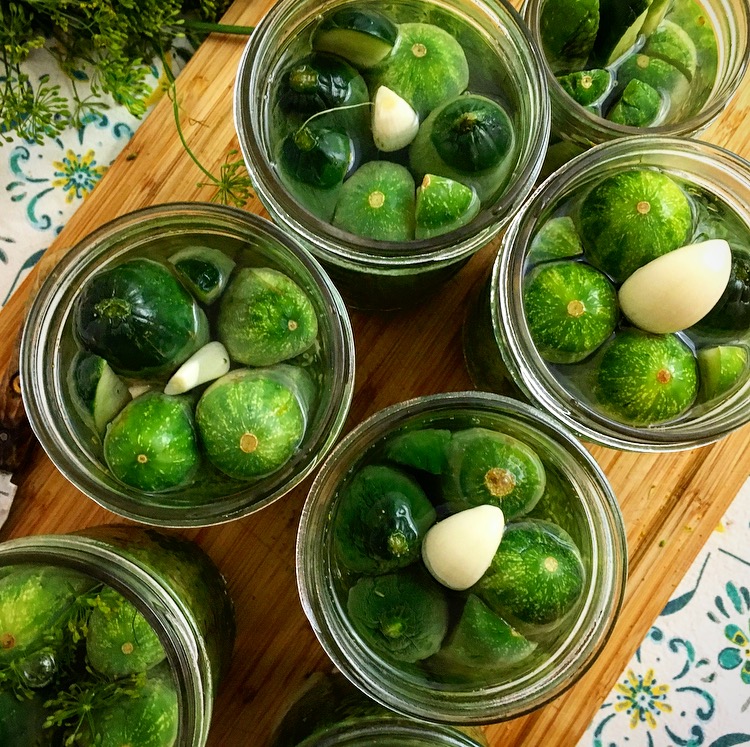
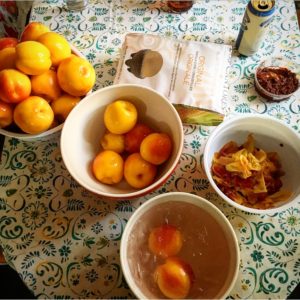
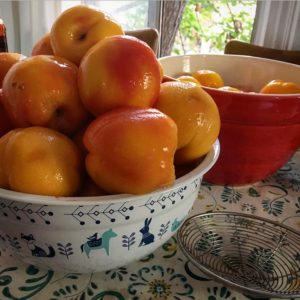
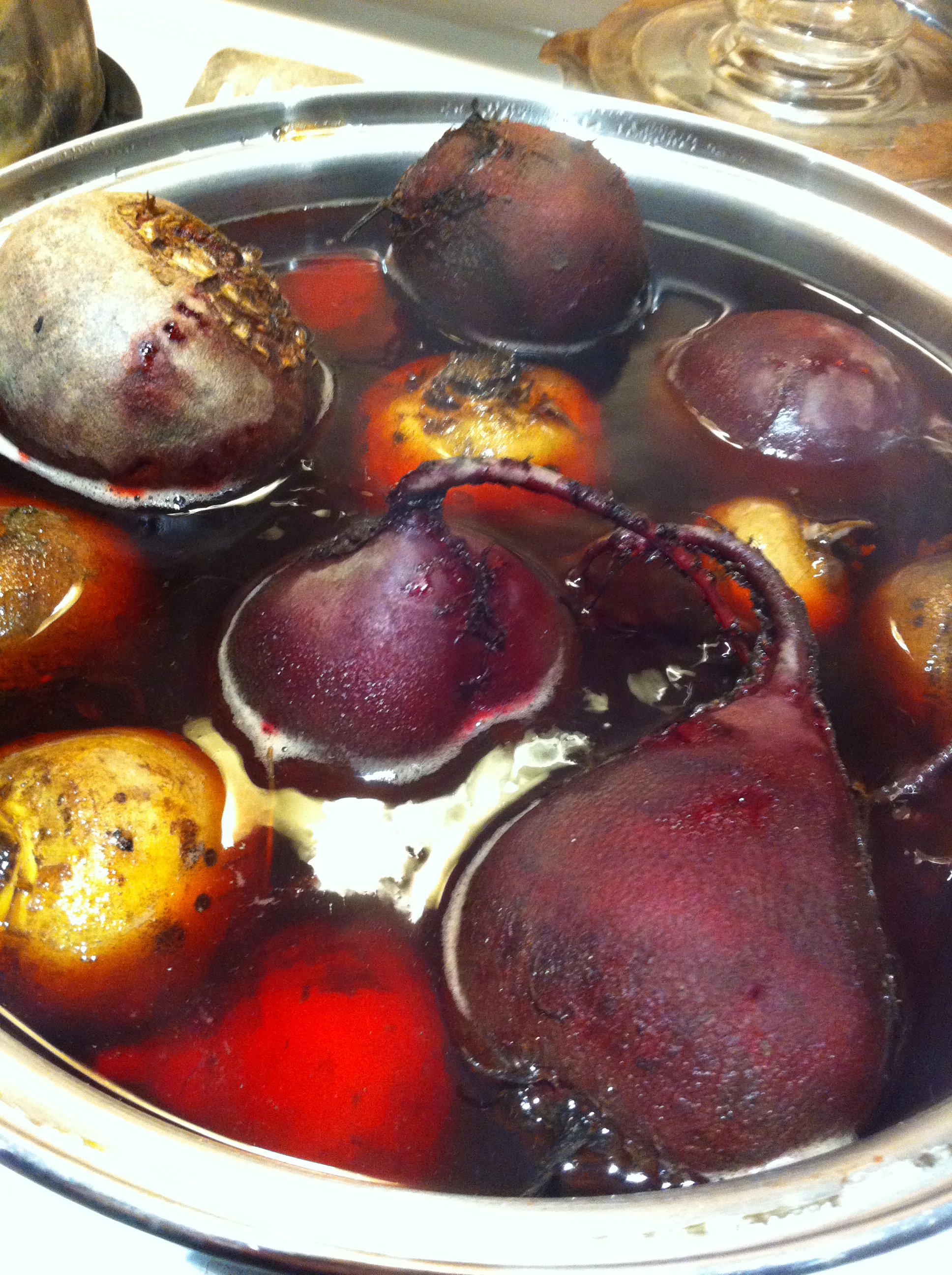

4 Comments
Liz
How was the flavor of the peaches with the Madeira?
Candace
It wasn’t that special, and now I have a bottle full of Madeira that I don’t know what to do with.
But I tried another batch with spiced rum (Sailor Jerry’s), and that was really delicious!
Opal Barker
Is it safe to add spices when canning peaches?
Candace
I’ve never had any trouble with it, but it’s worth checking with Barnardin or a more experienced canner to make sure its safe.